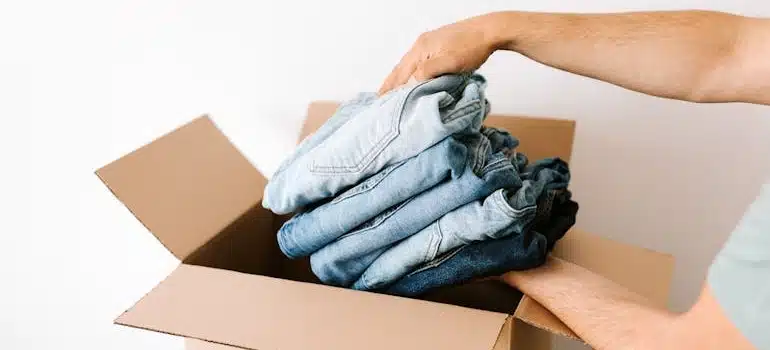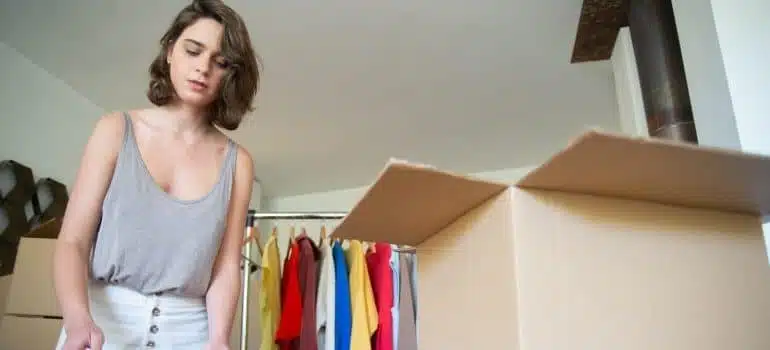Tips for storing your clothes long term
Living in Florida has its perks: sunny skies, warm winters, and coastal vibes. But when it comes to storing clothes, the climate can be your biggest challenge. You may think tossing some clothes into boxes and sliding them into a closet or attic is enough. It’s not. Without proper prep and storage methods, your clothes can become musty, wrinkled, or worse—ruined. If you plan to free up space and keep your clothes in top condition, use Pro Movers Miami tips for storing your clothes long term!
Understand the Florida climate before you store
You already know Florida stays warm and humid most of the year. That humidity doesn’t just affect how you feel; it gets into fabrics, boxes, and storage units. Even if you store clothes in a humid climate indoors, moisture in the air can settle on garments and slowly cause damage. For anything packed away long-term, this becomes a real problem.
Moisture triggers mold in natural fibers
Once moisture reaches your clothes, it doesn’t just sit there, it starts working against you. Natural fibers like cotton, wool, and linen absorb humidity easily. Over time, they become a breeding ground for mildew and mold, especially in dark, enclosed spaces.

Synthetic fabrics still face risks
You might open a storage bin months later and find clothes with a sour smell or mysterious spots that weren’t there before. Synthetic fabrics are slightly more resistant, but not immune. Even they can weaken or hold odors if exposed to enough humidity over time.
Miami heat and poor airflow speed up damage
High temperatures in Miami make humidity more dangerous. When warm air circulates in an enclosed space, it accelerates the breakdown of fabrics. That’s why leaving clothes in a garage, attic, or basic storage unit can be risky. Ventilation matters a lot in reliable storage in Miami. Without air circulation, moisture gets trapped and heat builds up, which speeds up the damage.
Prep your clothes the right way before storing them
Before you start storing your clothes long term, make sure each piece is clean and completely dry. Even a single wear can leave behind body oils, sweat, or food traces that attract pests. Dirty clothes are a magnet for insects, and any moisture left behind creates the perfect setting for mildew.
To prevent pests in clothing storage, place cedar blocks or lavender sachets inside your containers. Natural options repel insects without damaging fabrics or adding harsh chemical odors. Avoid mothballs unless they are sealed, and never place them directly on clothes.
Choose the best containers for storing clothes
Cardboard might be cheap and easy to find, but it is a poor choice in Florida. Over time, cardboard absorbs moisture and weakens. Insects can chew through it easily, especially if they detect scents coming from unwashed or fragranced items.

Go with airtight plastic bins and quality packing supplies. They block out moisture, keep insects away, and let you see what’s inside without opening the lid. Stack containers off the ground using shelving or pallets to improve air circulation and reduce flood risk.
Prevent pests in clothing storage
Florida’s warm climate makes pest control a top priority in Miami, especially when you’re storing fabrics for months at a time. Insects like silverfish, roaches, and moths are drawn to clothing, particularly when it’s improperly packed or stored in humid spaces. Unless you’re employing professional packing services in Miami, use the following strategies to reduce the risk of pest problems:
- Seal containers completely: Even a tiny gap in your storage bin can let bugs in. Use plastic containers with locking lids and avoid loosely closed bags.
- Stick to unscented laundry products: Scented detergents, dryer sheets, and fabric sprays can attract pests.
- Use natural repellents: Place cedar blocks or lavender sachets inside containers. These natural solutions deter insects without damaging your clothing.
- Keep storage areas clean and dry: Wipe down surfaces regularly and avoid stacking containers directly on the ground where moisture can collect.
- Inspect your storage unit or home storage area monthly: Pests can enter from adjacent units, especially in shared buildings. Ask about your climate-controlled storage facility’s pest control policies and update your repellents regularly.
Even if your unit appears clean, nearby tenants may not take the same precautions. Be proactive, and your clothes will stay protected no matter how long they’re packed away.
Make your storage easy to manage
Suits, dresses, and jackets store best when left on hangers. Use wardrobe boxes or zippered garment bags to keep them wrinkle-free and upright. Label each container with the contents and date of storage. Sort your items by season, fabric type, or frequency of use. If you ever need to grab something quickly, clear labeling saves time and hassle.
Furthermore, in fashion-conscious cities like Hollywood, FL, many people have extensive wardrobes, from seasonal rotations to collections for business or performance. If you’re packing up boxes of clothes to move them into a storage unit, the process can get overwhelming fast. Rather than carrying it all yourself, look into hiring expert moving companies Hollywood FL residents trust. Local movers understand how it works, and they’ll ensure your wardrobe reaches storage safely.

Know when to use vacuum bags to store clothing
Using vacuum bags for clothing storage can save space and protect against pests. They work well for items like winter coats, synthetic fabrics, and bulky comforters. When you remove air, you limit exposure to moisture and insects.
Also, avoid vacuum-sealing cotton, linen, or wool when storing your clothes long term. These materials need airflow to keep their shape and structure. Without it, they may become wrinkled, stiff, or even permanently creased. And if you want to preserve high-quality natural garments, skip the vacuum bags and use breathable garment bags or tissue-lined containers instead.
Planning to move your wardrobe into storage? Contact Pro Movers Miami to ensure your clothes are handled with care from packing to delivery!
